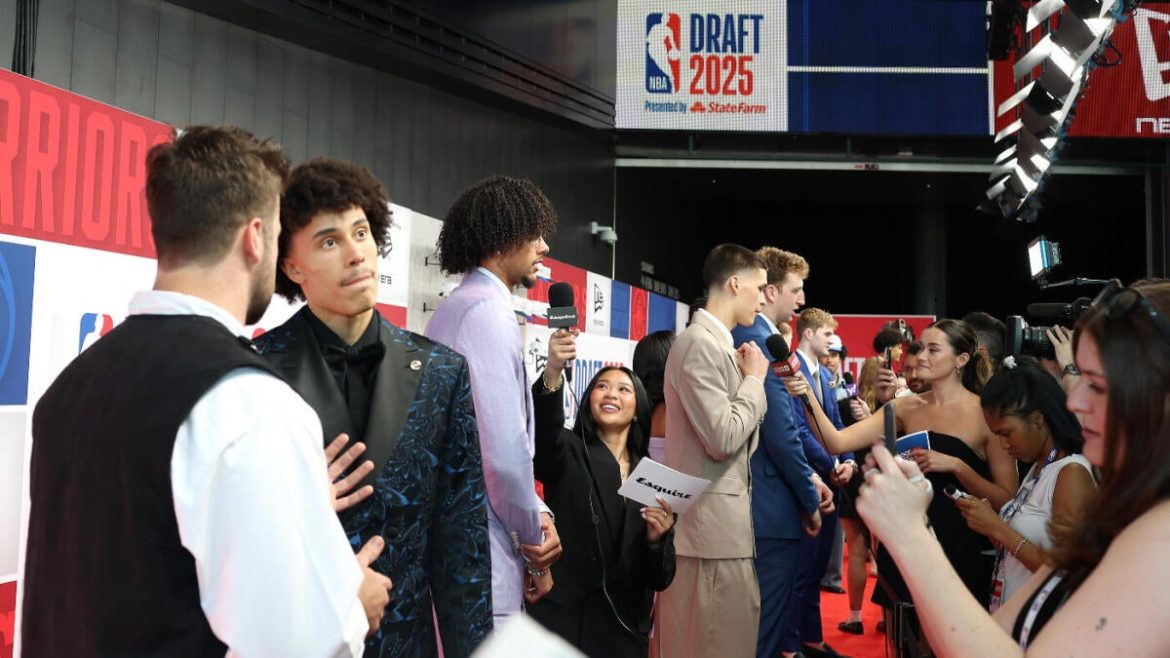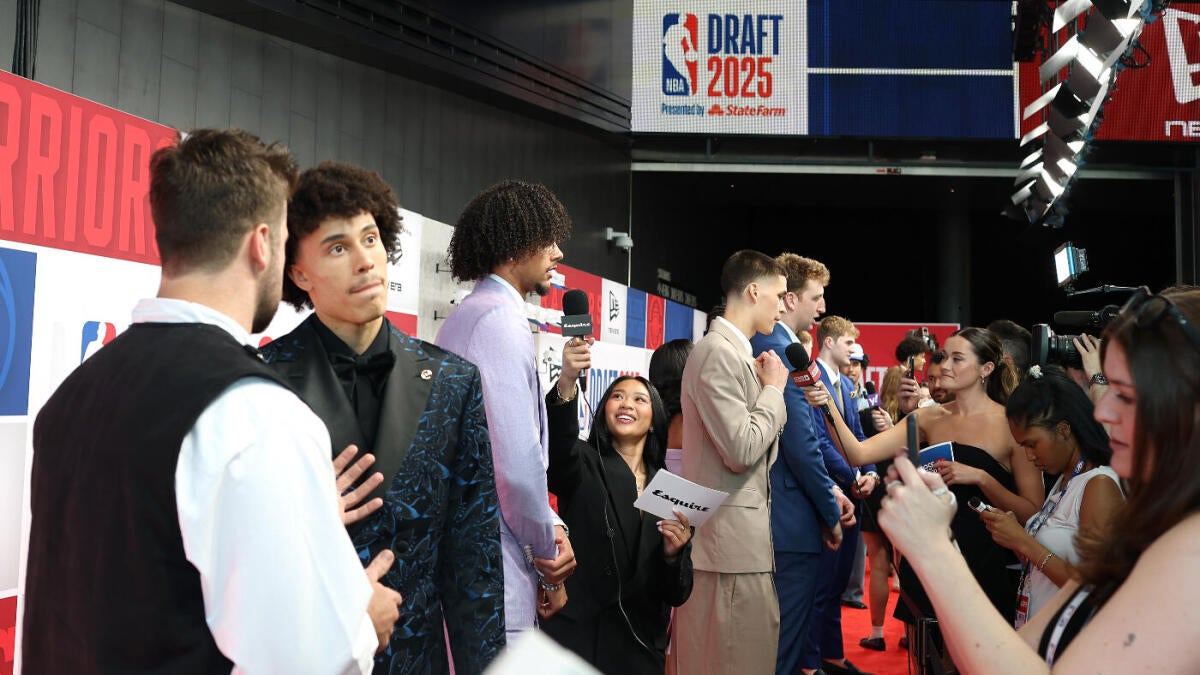The Second-Round Surge: Veteran College Stars Reshape the 2025 NBA Draft
The 2025 NBA Draft marked a significant shift in how teams approach the second round, with a notable emphasis on veteran college players who have honed their skills over multiple seasons. This trend reflects a broader evolution in NBA draft strategy, where experience, reliability, and immediate contributions are increasingly valued over raw potential. The early picks in the second round featured standout players like Johni Broome, Ryan Kalkbrenner, and Kam Jones, all of whom brought a level of maturity and production that teams found irresistible.
The early second-round selections in the 2025 NBA Draft were a testament to the value of seasoned college players. Ryan Kalkbrenner, a 7’1” center from Creighton, was selected 34th by the Charlotte Hornets. Kalkbrenner’s impressive performance at the NBA Combine, combined with his All-American honors and defensive prowess, made his selection a no-brainer for many teams. His ability to anchor a defense and contribute on the offensive end made him a prime target for teams looking for a reliable big man.
Johni Broome, a versatile big man from Auburn, was picked 35th by the Philadelphia 76ers. Broome’s defensive skills and two-way productivity made him an attractive option for teams in need of a dependable frontcourt presence. His selection highlighted the growing trend of teams prioritizing players who can contribute immediately rather than those with high upside but unproven track records.
Kam Jones, a dynamic guard from Marquette, was selected 38th by the Memphis Grizzlies. Jones’ scoring ability, off-ball movement, and high basketball IQ made him a valuable addition for teams looking to bolster their backcourt. His selection underscored the importance of players who can step in and contribute right away, especially for teams with playoff aspirations.
The 2025 NBA Draft’s second round was characterized by a focus on production and reliability rather than raw potential. Teams increasingly recognize the value of players who have spent multiple years refining their skills in college. This shift in draft strategy is driven by the realization that players like Kalkbrenner, Broome, and Jones are more likely to contribute immediately and adapt to the NBA’s demanding environment.
Beyond Upside—The Production Promise
General managers often emphasize the importance of “ceiling” when evaluating draft prospects. However, by the time teams reach the second round, the likelihood of finding a high-impact player diminishes. As a result, teams are increasingly prioritizing players with proven track records and a demonstrated ability to contribute at the college level. Players like Kalkbrenner and Broome, who have spent multiple years refining their skills, offer a more reliable path to NBA success.
NBA Readiness: Offense, Defense, and “Glue Guy” Skills
Players like Kam Jones bring a level of NBA readiness that is often lacking in younger prospects. Jones’ ability to take over possessions, space the floor, and contribute in multiple facets of the game makes him an attractive option for teams looking to add depth to their rosters. Similarly, Broome and Kalkbrenner’s defensive skills and versatility make them valuable additions to any team.
The Waiting Game for Raw Upside
While the early second round focused on polished, multi-year college players, several names with tantalizing skill sets or international pedigree found themselves sliding. The calculus was clear: many teams weren’t willing to roll the dice on developmental projects with so much ready-to-contribute talent on the board. The narrative that used to dominate the second round—wild swings at “high-upside” freshmen or overseas teenagers—never materialized at the same clip this year. The pool of remaining prospects only highlighted this: most teams chased experienced assets, not distant dreams.
The prioritization of veteran college stars in the 2025 NBA Draft represents a broader progression in NBA draft philosophy. Teams are increasingly recognizing the value of age, maturity, and coachability, especially for players who will fill the back end of their benches. This shift in thinking is driven by the realization that players with multiple years of college experience are more likely to adapt to the NBA’s demanding environment and contribute immediately.
“Age Concerns” Are Overstated
For years, draft discourse often penalized older college players out of fear their growth had plateaued. However, multiple recent draft classes have shown that age can be underrated—and maturity, adaptability, and coachability offer a premium, especially for teams stocking the back end of their bench. Players like Kalkbrenner, Broome, and Jones bring a level of maturity and experience that is invaluable in the NBA.
Drafting for System Fit, Not Just Best Player Available
Teams are increasingly prioritizing players who fit their systems and can contribute immediately. Broome and Kalkbrenner may not be offensive focal points in the NBA, but both project as scheme-independent contributors who can step into backup roles or find minutes with versatile skill sets. This approach is especially attractive amid the relentless churn of modern NBA rotations.
The Winning Pedigree: NCAA Stars Know Pressure
Veteran college players entering the league have a unique confidence forged by deep NCAA tournament runs and high-stakes matchups. They fill leadership voids, understand game planning, and take pride in small roles—the kinds of intangibles that rarely show up on a scouting report but often define playoff rotations. This experience makes them valuable additions to any team, especially those with playoff aspirations.
Ryan Kalkbrenner, a three-time conference defensive player of the year at Creighton, boasts elite shot-blocking instincts, touch around the rim, and underrated passing. His impressive performance at the NBA Combine reaffirmed his value as a mobile big who can defend in space and finish pick-and-rolls. Falling out of the first round may have lit a fire under him—and made Charlotte look shrewd.
Johni Broome earned every possible college accolade: first team all-conference, defensive player of the year, and a statistical profile bursting with blocks, boards, and efficiency. He helped Auburn rack up wins in March and combines a 7-foot wingspan with nimble footwork. NBA coaches see him as an immediate backup five—think Brandon Clarke with a little extra size and edge.
Kam Jones leaves school with a reputation as the kind of creator who can score at all three levels. His poise with the ball, experience running NBA-style sets, and savvy off screens suggest he’ll thrive in a modern pace-and-space system. For Memphis, he looks like an instant contributor off the bench, capable of sparking offense in second units.
The 2025 NBA Draft spotlighted a subtle but significant evolution in roster-building logic. As lottery swings keep trending younger, the second round now belongs to the seasoned, the skilled, the proven—the players whose college arcs shaped them for the grind of NBA realities. Johni Broome, Ryan Kalkbrenner, and Kam Jones embodied that shift as they heard their names called early in Round 2, a sign that in today’s league, winning teams know there’s gold in experience. The days of dismissing age are headed for extinction. In a league desperate for dependable role players and immediate production, the 2025 draft just put a stake in the ground: sometimes, the best bet is on who’s already done it. The NBA is listening—and the league may never look at the second round the same way again.





